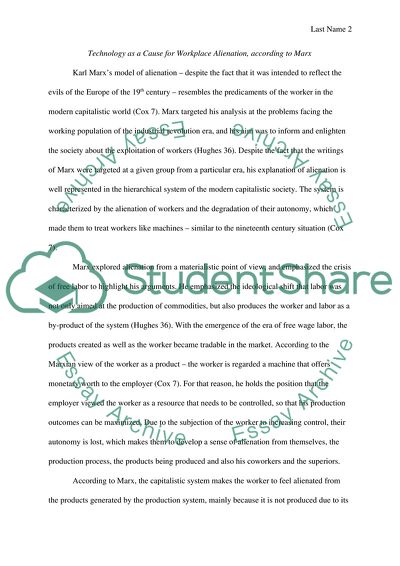Cite this document
(The Complexity of Technology as the Prime Cause of Workplace Essay Example | Topics and Well Written Essays - 1750 words, n.d.)
The Complexity of Technology as the Prime Cause of Workplace Essay Example | Topics and Well Written Essays - 1750 words. https://studentshare.org/sociology/1808477-topic-assessment-of-complexity-of-the-technology-employed-in-the-industry-as-the-prime-cause-of-alienation-in-the-work-place
The Complexity of Technology as the Prime Cause of Workplace Essay Example | Topics and Well Written Essays - 1750 words. https://studentshare.org/sociology/1808477-topic-assessment-of-complexity-of-the-technology-employed-in-the-industry-as-the-prime-cause-of-alienation-in-the-work-place
(The Complexity of Technology As the Prime Cause of Workplace Essay Example | Topics and Well Written Essays - 1750 Words)
The Complexity of Technology As the Prime Cause of Workplace Essay Example | Topics and Well Written Essays - 1750 Words. https://studentshare.org/sociology/1808477-topic-assessment-of-complexity-of-the-technology-employed-in-the-industry-as-the-prime-cause-of-alienation-in-the-work-place.
The Complexity of Technology As the Prime Cause of Workplace Essay Example | Topics and Well Written Essays - 1750 Words. https://studentshare.org/sociology/1808477-topic-assessment-of-complexity-of-the-technology-employed-in-the-industry-as-the-prime-cause-of-alienation-in-the-work-place.
“The Complexity of Technology As the Prime Cause of Workplace Essay Example | Topics and Well Written Essays - 1750 Words”. https://studentshare.org/sociology/1808477-topic-assessment-of-complexity-of-the-technology-employed-in-the-industry-as-the-prime-cause-of-alienation-in-the-work-place.


